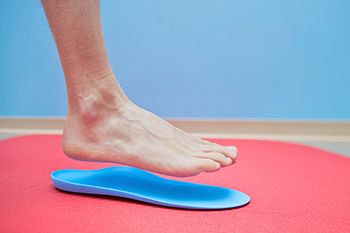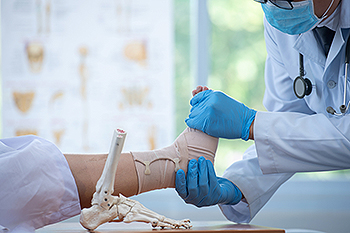Many people experience the sensation of “pins and needles” in their feet when they cross their legs for too long. Generally, it recedes once the blood flows to the affected area. However, when the occurrence of this sensation becomes more frequent, it can affect your ability to walk or stand safely. This condition, known as paresthesia, may be experienced as tingling, itching and burning, aching pain, or numbness. The cause is likely to be peripheral artery disease (PAD), which is a buildup of plaque in your arteries. The result is poor circulation due to the reduced flow of blood to the feet. Other contributing factors include having diabetes, being overweight, overindulgence in alcohol, and possible vitamin deficiency. Some actions that might help are eating healthy foods, avoiding alcoholic beverages, and taking short walks daily. If you have noticed an increase in the frequency of a pins-and-needles sensation in your feet, it is a good idea to make an appointment with a podiatrist as soon as possible for a complete examination and suggested treatment plan.
Peripheral artery disease can pose a serious risk to your health. It can increase the risk of stroke and heart attack. If you have symptoms of peripheral artery disease, consult with one of our podiatrists from Biebel & DeCotiis Podiatry Associates. Our doctors will assess your condition and provide you with quality foot and ankle treatment.
Peripheral artery disease (PAD) is when arteries are constricted due to plaque (fatty deposits) build-up. This results in less blood flow to the legs and other extremities. The main cause of PAD is atherosclerosis, in which plaque builds up in the arteries.
Symptoms
Symptoms of PAD include:
- Claudication (leg pain from walking)
- Numbness in legs
- Decrease in growth of leg hair and toenails
- Paleness of the skin
- Erectile dysfunction
- Sores and wounds on legs and feet that won’t heal
- Coldness in one leg
It is important to note that a majority of individuals never show any symptoms of PAD.
Diagnosis
While PAD occurs in the legs and arteries, Podiatrists can diagnose PAD. Podiatrists utilize a test called an ankle-brachial index (ABI). An ABI test compares blood pressure in your arm to you ankle to see if any abnormality occurs. Ultrasound and imaging devices may also be used.
Treatment
Fortunately, lifestyle changes such as maintaining a healthy diet, exercising, managing cholesterol and blood sugar levels, and quitting smoking, can all treat PAD. Medications that prevent clots from occurring can be prescribed. Finally, in some cases, surgery may be recommended.
If you have any questions, please feel free to contact one of our offices located in Holmdel and Middletown, NJ . We offer the newest diagnostic and treatment technologies for all your foot care needs.





